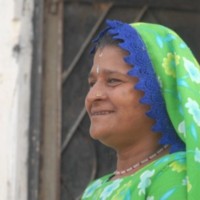
Veero
According to the 2016 Global Slavery Index, over 2 millions people in Pakistan live in slavery. One of the most prevalent forms of slavery here is bonded labor, in which an initial debt assumed by a worker as part of the terms of employment is exploited, ultimately entrapping other family members, sometimes for generations. Bonded labor is concentrated in Sindh and Punjab provinces, but also occurs in Balochistan and Khyber Pakhtunkhwa provinces, in agriculture and brick-making and, to a lesser extent, in fisheries, mining, and handicraft- and carpet-making. Some feudal landlords and brick kiln owners affiliated with political parties use their influence to protect their involvement in bonded labor. Veero’s family took salary advances as migrant farm workers, after which the landowner trapped them by claiming the debt was never repaid. Veero was able to escape her enslavement on foot, a difficult and dangerous journey. Today she works on farms as a freewoman, and helps with the release of other slaves. So far she has helped at least 700 others out of slavery.

Trisha
Trisha became more vocal in speaking out about the abuses of the sex industry after writing about the 2006-2007 murder trial of convicted serial killer Robert Pickton—most of whose victims were women in prostitution and many of whom were known to Trisha. In 2009 she founded EVE (formerly Exploited Voices now Educating), a volunteer, non-governmental, non-profit organization composed of former sex-industry women dedicated to abolishing prostitution as a form of violence against women. She is a leading activist in the campaign calling on the Canadian government to reform its prostitution laws so that women in prostitution are decriminalized and provided with much-needed services, while sex buyers, pimps and brothel owners are criminalized.

Shandra (Narrative 2)
In 2015, the most reported venues/industries for sex trafficking included commercial-front brothels, hotel/motel-based trafficking, online advertisements with unknown locations, residential brothels, and street-based sex trafficking. Shandra was lured to the United States with the promise of legal work in a hotel, but when she arrived she was imprisoned for sexual exploitation. She escaped and worked with the police to prosecute the trafficker. She is now an advocate for slavery survivors. Here she argues that stronger regulation of foreign recruiters is needed to prevent situations of exploitation and enslavement.

Shamere
In 2015, the most reported venues/industries for sex slavery included commercial-front brothels, hotel/motel-based trafficking, online advertisements with unknown locations, residential brothels, and street-based sex trafficking. Particularly vulnerable populations in the United States include: children in the child welfare and juvenile justice systems; runaway and homeless youth; unaccompanied children; American Indians and Alaska Natives; migrant laborers, including undocumented workers and participants in visa programs for temporary workers; foreign national domestic workers in diplomatic households; persons with limited English proficiency; persons with low literacy; persons with disabilities; and LGBTI individuals. NGOs have noted a recent increase in cases of street gangs engaging in human trafficking. Shamere here discusses some of the legal complications experienced by slavery survivors who were forced to recruit or otherwise take part in the illegal business that enslaved them. She argues that there are no easy answers as to whether a survivor is also a perpetrator and should be sentenced accordingly: “every case is different.”
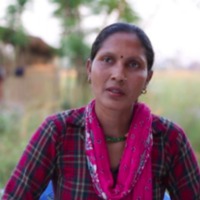
Seema A.
Men and women migrate from South and Southeast Asia, Egypt, the Middle East, and increasingly throughout Africa to work in Kuwait, predominantly in the domestic service, construction, hospitality, and sanitation sectors. Several labor-sending countries, including India, Nepal, Indonesia, Ethiopia, Zimbabwe, and Bangladesh, restrict their female nationals from domestic employment in Kuwait. The vast majority of migrant workers arrive voluntarily; however, upon arrival some sponsors subject migrants to forced labor, including through non-payment of wages, protracted working hours without rest, deprivation of food, threats, physical or sexual abuse, and restrictions on movement, such as confinement to the workplace and the withholding of passports. Many of the migrant workers arriving in Kuwait have paid exorbitant fees to labor recruiters in their home countries or are coerced into paying labor broker fees in Kuwait which, according to Kuwaiti law, should be paid by the employer—a practice making workers highly vulnerable to forced labor, including debt bondage. In Nepal, poverty forces people to seek work overseas to provide for themselves and their desperate families. Migration across the border is unsafe and uncontrolled, which is how Seema was trafficked and forced into slavery.

Ronny
In the US, slavery occurs in both legal and illicit industries, including in commercial sex, hospitality, traveling sales crews, agriculture, seafood, manufacturing, janitorial services, construction, restaurants, health care, care for persons with disabilities, salon services, fairs and carnivals, peddling and begging, drug smuggling and distribution, and child care and domestic work. Individuals who entered the United States with and without legal status have been identified as trafficking victims. Government officials, companies, and NGOs have expressed concern about the risk of human trafficking and slavery in global supply chains, including in federal contracts. Victims originate from almost every region of the world.
Ronny’s account mentions some common features of this kind of slavery: a false promise of a lucrative job, withheld wages, debt bondage that is made difficult or impossible to pay off, and threats against the worker and their family. Ronny has become an advocate for survivors of slavery in the United States.
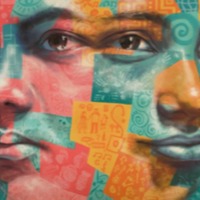
Phalla
Cambodia was renowned as a sex tourism destination in the 1990s and this legacy is still prevalent today with women and girls trafficked within the thriving sex industry in Cambodia's major cities. Despite significant attempts to curb CSE, NGOs report the industry has been pushed underground and sex offenders are still able to purchase sex with children through an intermediary rather than more overt selling of sex in brothels. Boys and young men are also vulnerable to sexual exploitation, with many entering the massage industry due to a lack of training and skills. “Phalla” studied to grade 12, then was sold to a brothel by her grandmother. Names have been changed to protect the survivors' privacy.

Margeaux
Particularly vulnerable populations in the United States include: children in the child welfare and juvenile justice systems; runaway and homeless youth; unaccompanied children. In 2015, the most reported venues/industries for sex trafficking included commercial-front brothels, hotel/motel-based trafficking, online advertisements with unknown locations, residential brothels, and street-based sex trafficking. Marheaux was exploited sexually as a child in the United States, but is now an activist and advocate for other survivors of slavery. She argues for better support for those leaving situations of enslavement.
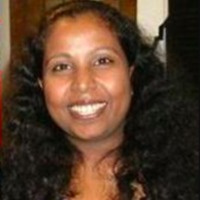
Kanthi
There are an estimated 403,000 people living in conditions of modern slavery in the United States (GSI 2018). The US attracts migrants and refugees who are particularly at risk of vulnerability to human trafficking. Trafficking victims often responding to fraudulent offers of employment in the US migrate willingly and are subsequently subjected to conditions of involuntary servitude in industries such as forced labour and commercial sexual exploitation.Kanthi spent more than two years in domestic servitude in US after being trafficked from her home in Sri Lanka under false pretenses. This narrative is taken from an interview by Julie Fernandes as part of a webcast by Alliance to End Slavery and Trafficking (ATEST). Kanthi discusses what the most important services are for those coming out of slavery, and the barriers that people must overcome in order to remove themselves from situations of slavery.
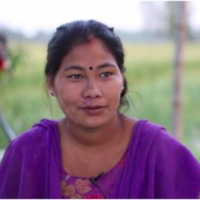
Kamala
In Nepal, poverty forces people to seek work overseas to provide for themselves and their desperate families. Migration across the border is unsafe and uncontrolled, which is how Kamala was trafficked and forced into slavery. It is estimated that there are over four million domestic workers in India. The domestic sector is informal and unregulated, obscured in private homes, and workers are not recognised as such but rather as ‘informal help’. Their wages are, on average, only a third of those in other sectors, they have very limited social protections, and commonly suffer poor working conditions, exploitation, abuse and slavery. Many domestic workers are migrants from poorer states and are among the most marginalised and socially discriminated populations in India.
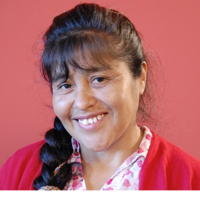
Josefa
Josefa Condori Quispe left her small village in Peru at age 9 to work as a maid in Lima. After spending much of her life as a house slave, she managed to get an education and escape domestic servitude. She founded Yanapanakusun to fight the root causes of slavery, and she runs a shelter for young slavery survivors.
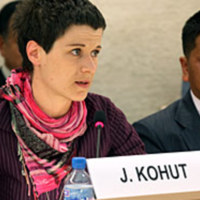
Jana
Bosnian victims are subjected to sex trafficking and forced labor in construction and other sectors in countries across Europe including Croatia, France, Serbia, Slovenia, and Austria. Corruption creates an environment enabling some trafficking crimes. Thirty-year old Jana Kohut from Bosnia told the Human Rights Council how she was trafficked and sexually exploited for four months in neighbouring Slovenia. Jana was abducted and forced to work as a prostitute for four months before she managed to escape. In her testimony, she calls for the creation of safe places and support for victims and survivors of trafficking.

Beth
There are an estimated 403,000 people living in modern slavery in the United States (GSI 2018). Sex trafficking exists throughout the country. Traffickers use violence, threats, lies, debt bondage and other forms of coercion to compel adults and children to engage in commercial sex acts against their will. The situations that sex trafficking victims face vary, many victims become romantically involved with someone who then forces them into prostitution. Others are lured with false promises of a job, and some are forced to sell sex by members of their own families. Victims of sex trafficking include both foreign nationals and US citizens, with women making up the majority of those trafficked for the purposes of commercial sexual exploitation. In 2015, the most reported venues/industries for sex trafficking included commercial-front brothels, hotel/motel-based trafficking, online advertisements with unknown locations, residential brothels, and street-based sex trafficking. Beth Jacobs ran away from home at the age of 16. Beth recalls how she was ‘befriended’ by a trafficker, drugged, raped, and taken to another state. She was forced to provide sexual services for six years, subjected to daily abuse including rape and beatings. Beth calls on the Arizona legislature to enact provisions supported by the state’s Human Trafficking Task Force to end the criminalization of human trafficking victims.
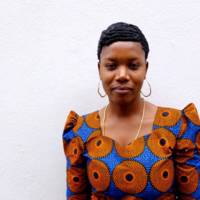
Angel
In Tanzania, internal trafficking is more prevalent than transnational trafficking and characteristically facilitated by victims’ family members, friends, or intermediaries offering assistance with education or securing employment in urban areas. Impoverished children from the rural interior remain most vulnerable to trafficking. Girls are exploited in domestic servitude throughout the country and in sex trafficking particularly in tourist hubs and along the border with Kenya.
Angel ran away from home to avoid a forced marriage and accepted exploitative domestic work to avoid being homeless. Her story demonstrates how initiatives by anti-slavery NGOs to educate young workers about their rights can help them to avoid financial and sexual exploitation.
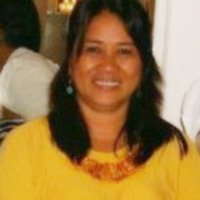
Alma
In the Philippines, women and children are subjected to sexual exploitation in brothels, bars, and massage parlours, online, as well as in the production of pornography. The Philippines is an international hub for prostitution and commercial sex tourism – a highly profitable businesses for organised criminal syndicates. The demand for sex with children among both local and foreign men has continued to fuel child sex tourism. Rising internet usage rates, the availability of mobile phones and poverty has fostered online child sexual exploitation. Alma’s story highlights how survivors can use their experiences and knowledge in the fight against slavery and exploitation. Alma works not only to help women to freedom but to change the culture around prostitution, which often works to criminalize and delegitimize the women who are exploited within the industry, while protecting those who exploit.
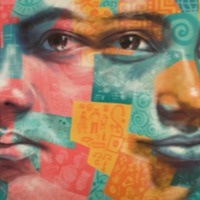
Wati
Wati was enslaved in forced domestic labour between 1983 and 2000, where she was beaten and abused. She tried to escape in 1990 and 1992, and escaped successfully in 2000. She told her story to another survivor, Kanthi. Both women were part of the Survivor Advisory Caucus attached to the Coalition Against Slavery and Trafficking in Los Angeles (CAST LA).
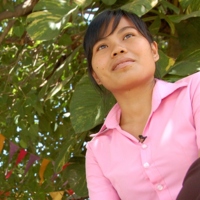
Sina
Sina was born in Vietnam and enslaved in Cambodia, where she was forced into prostitution and drugged to become easier to control. Sina recalls that the Cambodian police, rather than help her home to Vietnam, took her to another brothel. At the time of narrating her story, she worked for the Somaly Mam Foundation as leader of its Voices for Change programme, and she reflects on both the satisfaction and difficulties of her work helping others escape their enslavement. Many Vietnamese women and children are misled by fraudulent employment opportunities and sold to brothel operators on the borders of China, Cambodia, and Laos, and elsewhere in Asia, including Thailand, Malaysia, Republic of Korea, Taiwan, and Singapore. Some Vietnamese women who travel abroad for internationally brokered marriages or jobs in restaurants, massage parlors, and karaoke bars—mostly to China, Malaysia, and Singapore—are subjected to domestic servitude or forced prostitution.
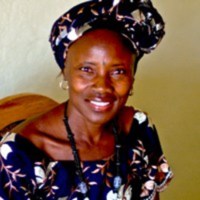
Ruth A.
Settled with freed slaves from the US after 1822, and founded as a republic in 1847, Liberia was named to mean “the country of the free.” But today, men, women and children are trafficked into slavery within Liberia, and children are brought into the country for domestic and sexual slavery from Sierra Leone, Guinea, and Cote d’Ivoire. Children are also trafficked out of Liberia to Guinea, The Gambia, and Nigeria—as well as to Cote d’Ivoire for use in combat. And during Liberia’s civil war, which ended after 14 years in 2003, both government forces and rebel factions forcibly recruited many thousands of children for use in combat and as messengers and porters. Ruth Kamara was trafficked into sex slavery in Liberia’s capital, Monrovia, in the early 1990s. She was brought from Sierra Leone, where women and children are also trafficked out to Guinea, Cote d’Ivoire, Nigeria, Guinea-Bissau, The Gambia, the Middle East, and Europe. As in Liberia, a civil war in Sierra Leone between government and rebel forces has prompted forcible recruitment for combat. In addition, that war of 1991-2002 displaced more than two million people, many of whom became at risk of exploitation by traffickers. There are no reliable statistics for either Liberia or Sierra Leone, but more broadly, across all the countries of West and Central Africa, around 300,000 children are trafficked into slavery each year. Now fashioning the abolitionist movement as a mini civil war that she is “ready to fight,” Ruth explains that her weapon in that war is her testimony as a survivor. She speaks to people in her country, defines human trafficking for them, and then will “always back it up with my story.”
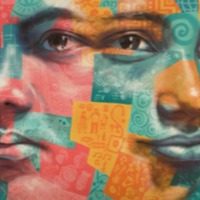
Masha (Narrative 2)
Masha was trafficked to Germany from Russia and enslaved in sex work when she was 24 years old. She was kept prisoner and her passport was withheld from her to prevent her from escaping, but was later arrested in a police raid, which gave her the opportunity to return to Russia. Masha recalls that the German police did not try to understand her situation but simply treated her as a criminal. Another narrative from Masha is available in the archive.
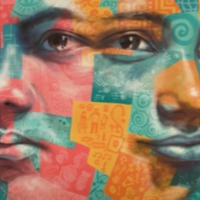
Masha (Narrative 1)
Masha was trafficked into Germany from Russia, where traffickers abduct an estimated 55,000 women each year. Corrupt police officers and border guards reportedly accept bribes to facilitate trafficking. She was kept prisoner and her passport was withheld from her to prevent her from escaping, but was later arrested in a police raid, which gave her the opportunity to return to Russia. Masha recalls that the German police did not try to understand her situation but simply treated her as a criminal. Another narrative from Masha is available in the archive.